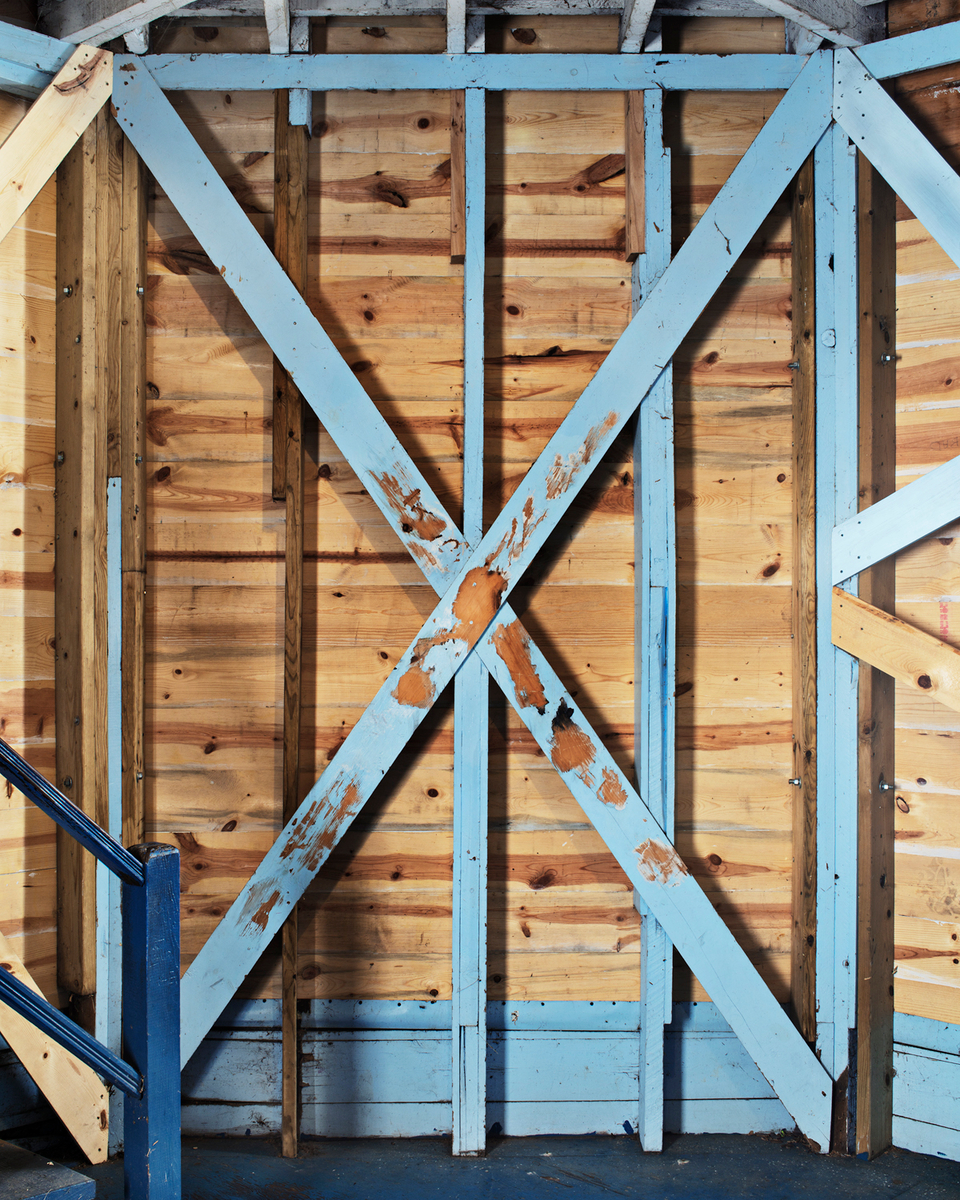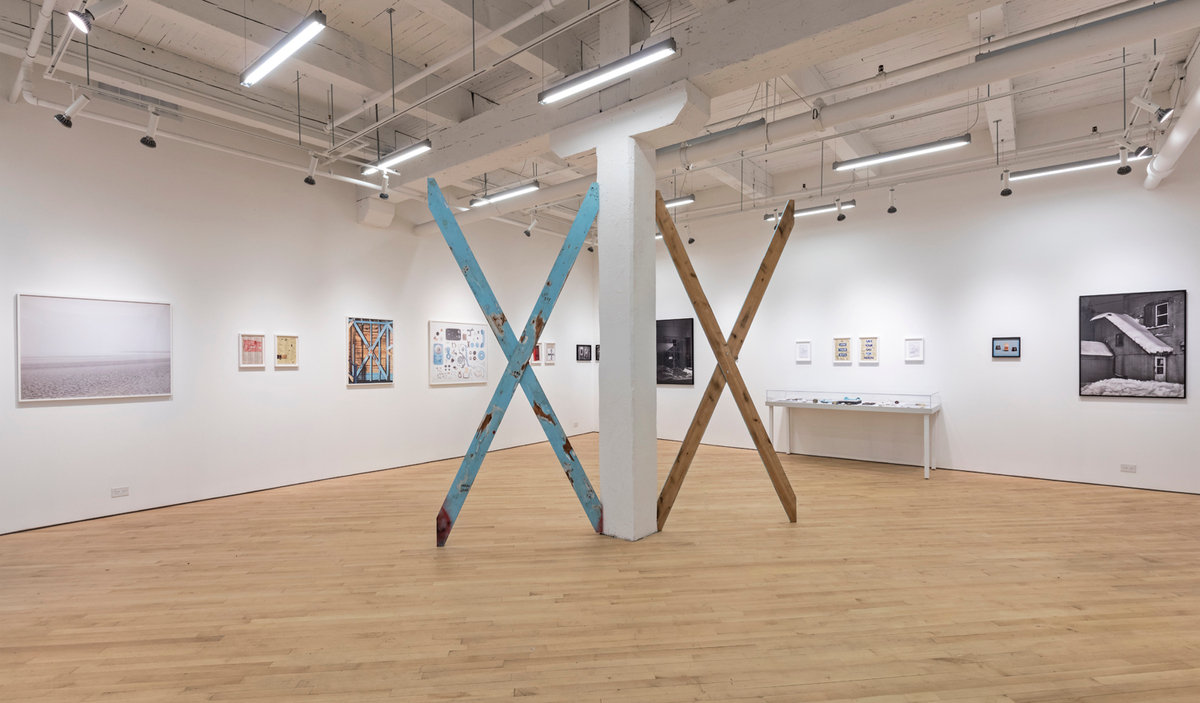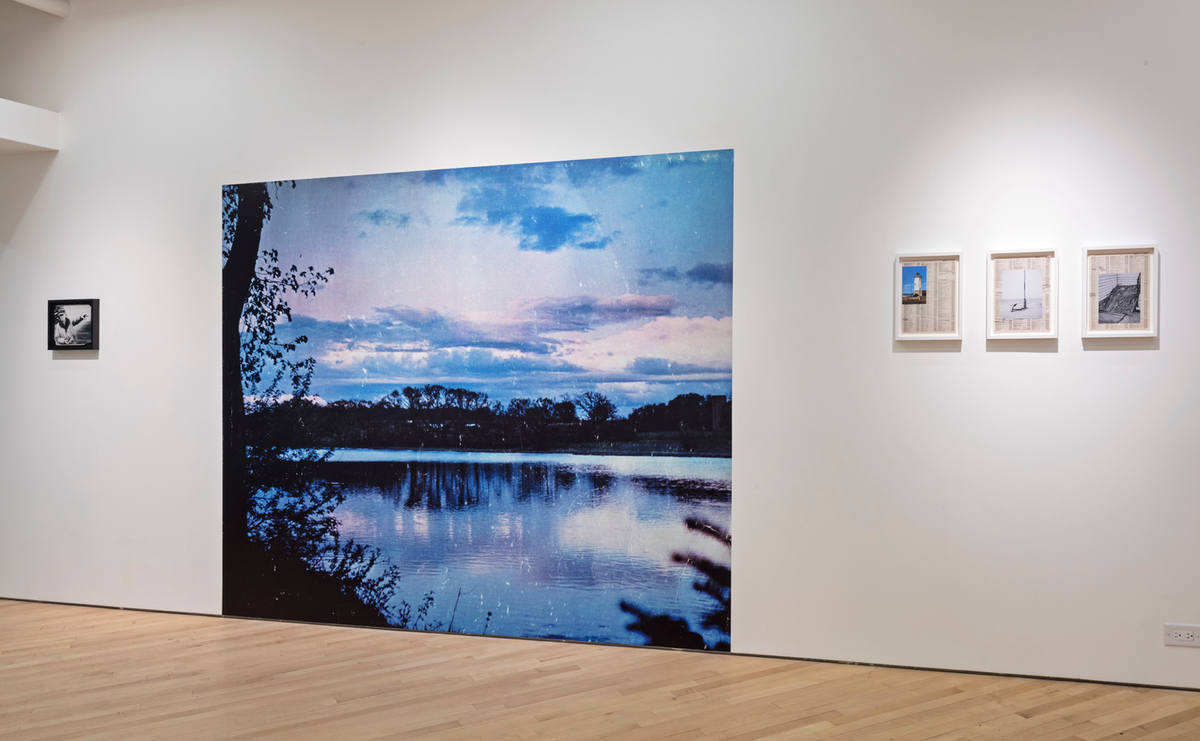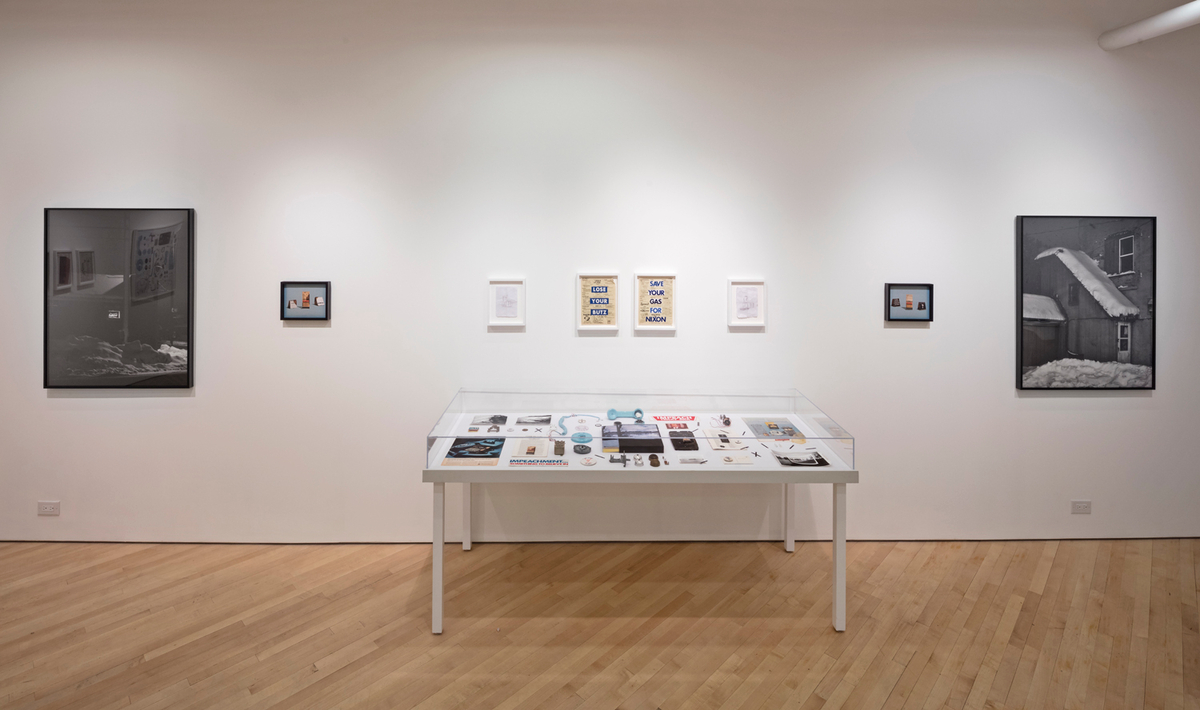Christian Patterson Bottom of the Lake
Bottom of the Lake is an elusive exploration of New York artist Christian Patterson’s hometown of Fond du Lac, Wisconsin. Less interested in a conventional portrait of his youth than using the subject to consider ways of looking and understanding, Patterson takes a semiotic approach to delve into ideas of memory, place, and identity. Employing documentary strategies seen in his early work, such as Redheaded Peckerwood (2005 – 2011), Patterson’s investigative style questions what is fact and fiction, encouraging an interpretive reading of the work.
Bottom of the Lake originates as an artist book—a facsimile of his family’s personal copy of the 1973 Fond du Lac telephone directory. The directory functions as a historical document encapsulating the essence of a small, Midwest American town at a particular point in time. For his book, Patterson built upon the directory’s pages by inserting photographs, text, and drawings, adding to the doodles and commentary interspersed throughout the original. The exhibition expands on these visual strategies and contains selected pages from the publication, installations, and found objects, presenting an abstract depiction of place and cryptic clues about the artist’s past. For instance, the original cover of the directory, an idyllic landscape, is displayed in the gallery as a large-scale colour mural titled Fond du Lac (Blue Lake) (2013), setting the stage for Patterson’s narrative about this small town. In contrast, forensically charged black-and-white photographs made by the artist depict present-day views of the town’s harsh winter climate, including detailed photographs of wood, stone, water, and snow. The exhibition has little direct reference to the personal and in fact is absent of people, except in the case of Self Portrait (Old Man) (2015), a black-and-white photograph of a man holding a camera; the title suggests the man could be the artist, if he had stayed in his hometown.
Throughout the exhibition, a number of leitmotifs are deconstructed in a variety of unexpected ways. For example, Patterson presents the town’s iconic lighthouse in numerous incarnations: as a picturesque postcard, as a tightly focused photograph of an interior view of the structure, and as a physical installation of plywood and blue beams in the middle of the gallery. A blue rotary telephone is shown in gradual stages of fragmentation in a series of photographs, and displayed in its entirety in Telephone Deconstruction #1 (2014). An interactive installation invites the viewer to listen to a collection of scripted, archival, and field recordings, reinforcing the nuances of fact and fiction and the hazy recollection of memory. Patterson’s playful iterations serve to question the nature of representation and how objects function as signs.
Bottom of the Lake is a multi-faceted examination of identity and place, offering clues and visual threads to trigger the viewer’s imagination. A telling statement written on a found matchbook reads, “SEEING Change Through TIME,” further emphasizing the act of looking and the formation of personal memory and collective history of this small town of Fond du Lac.
Organized by CONTACT
Curated by Tara Smith





